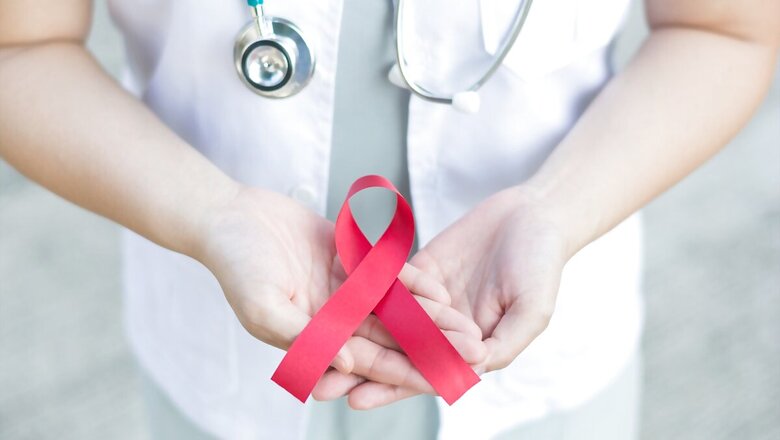
views
Acquired immunodeficiency syndrome or AIDS caused by the human immunodeficiency viruses (HIV) is a deadly disease that claims about a million lives every year. At present, there are no vaccines to prevent AIDS. On May 18 each year, World AIDS Vaccine Day is celebrated to highlight the urgent need for HIV-AIDS vaccines. For now, there are certain precautions that people can take to avoid catching the deadly disease.
1. Practice Safe Sex
As per the Centers for Disease Control and Prevention (CDC), HIV can spread through anal and vaginal intercourse if partners do not use condoms. The latex sheaths are thus an absolute necessity. Oral intercourse, on the other hand, has a much lower risk of spreading HIV but is still not risk-free. The virus is spread through bodily fluids like seminal fluid, vaginal fluid and blood, but not saliva.
2. HIV screening of couples and mothers
The virus can not only spread among couples but also between mother and child during pregnancy. Mothers should avoid breastfeeding their babies if they are infected. Having other sexually transmitted infection (STIs) also increases the risk of acquiring HIV. It is thus necessary to get tested for sexually transmitted diseases (STDs).
3. Don’t share needles
HIV can spread through syringes and needles if they are shared between two or more people for injecting drugs and medications. Hence, it is best to discard such syringes after a one-time use. The water used for injections should not be shared either as it can also spread HIV.
4. Prophylaxis treatments
Pre-exposure prophylaxis or PrEP is a medication taken by those who might be at risk of getting infected through intercourse or drug use through injection. PrEP tablets are taken every day for the period when the person is most vulnerable. It prevents the replication of the virus. Post-exposure prophylaxis or PEP is another antiretroviral drug, taken within 72 hours of a possible infection.
5. Antiviral treatment
Following the diagnosis of HIV, antiretroviral (ART) therapy is recommended. It helps the immune system by lowering the viral load in the body. Except for pregnancy and breastfeeding, the risk of spreading HIV through sex or sharing syringes is practically eliminated.
Read all the Latest Lifestyle News here




















Comments
0 comment